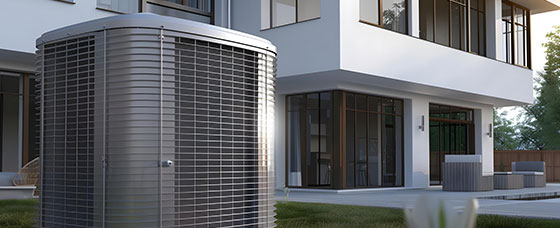Putting in a thermostat looks straightforward. Maybe all it needs are a few screws, some wire, and a fast setup. However, errors may cause wasted energy, uneven temperatures, and needless annoyance. A thermostat regulates heating and cooling; hence, mistakes in installation could lead to long-term problems compromising comfort and energy costs.
Understanding common mistakes can help avoid unnecessary setbacks. Proper placement, wiring, and settings make all the difference. Here are the most frequent errors and how to prevent them.
Placing the Thermostat in the Wrong Spot
The location of a thermostat directly affects its performance. Incorrect placement can cause it to misread the room’s temperature, leading to unnecessary heating or cooling.
- Too Close to Heat Sources: Setting a thermostat adjacent to TVs, stoves, or lights might lead it to show above the ambient temperature.
- Exposed to Direct Sunlight: A thermostat positioned next to windows or in intense sunlight might overstate the room’s temperature and result in pointless cooling.
- Near Drafts or Vents: Should one position the thermostat too near windows, doors, or vents, it may detect erroneous temperatures and cause regular on- and off-cycle action.
- Installed in Hallways: Although halls are sometimes used for installations, they do not necessarily represent the temperature of inhabited rooms. Therefore, changes are less successful.
Not Leveling the Thermostat Correctly
A thermostat must sit evenly on the wall to work correctly. Some older models use mercury switches that require proper leveling. Even modern digital thermostats need a flat surface for the internal sensors to function accurately. A tilted thermostat may not read the temperature correctly, leading to an imbalanced heating and cooling cycle.
Incorrect Wiring
Among the most often made errors is miswiring the thermostat. While wiring seems straightforward, even a small mistake can cause heating or cooling systems to malfunction.
- Loose Connections: Wires that are not securely fastened can lead to inconsistent performance.
- Wrong Terminals: Connecting cables to the wrong terminals might prohibit the system from turning on or running endlessly.
- Skipping the C-Wire (Common Wire): Many contemporary thermostats run continuously on a C-wire. If missing, the thermostat might not work properly or drain batteries quickly.
- Forgetting to Turn Off Power: Working on wiring with the power still on can be dangerous and may damage the thermostat or HVAC system.
Ignoring Compatibility Issues
Not all thermostats work with every HVAC system. Before installation, checking compatibility ensures the thermostat functions correctly.
- Different Voltage Requirements: Some thermostats are designed for low-voltage systems, while others work with high-voltage setups. Inappropriate type may harm the system.
- Multi-Stage vs. Single-Stage Systems: Installing a thermostat designed for a single-stage system on a multi-stage system may limit efficiency.
- Heat Pump Compatibility: If the system includes a heat pump, the thermostat must be able to control both heating and cooling cycles correctly.
Skipping the Calibration Process
Calibration guarantees the thermostat reads the right temperature after installation. Many people skip this step, assuming the factory settings will work perfectly. However, small adjustments can make a big difference in energy efficiency and comfort.
- Verifying Temperature Accuracy: Compare readings with another thermometer. If there is a significant difference, calibration adjustments may be necessary.
- Configuring System Settings: Adjusting fan settings, cycle lengths, and other preferences improves overall efficiency.
Failing to Program the Thermostat
Modern thermostats offer programmable features that help save energy, but many people leave them on default settings. This mistake can lead to wasted energy and higher bills.
- Leaving It at One Temperature All Day: Setting a thermostat at the same temperature throughout the day wastes energy when no one is home.
- Forgetting to Adjust for Seasonal Changes: A thermostat should be adjusted as outdoor temperatures change.
- Not Using Scheduling Features: Many thermostats allow for different temperature settings during the day and night, saving energy without sacrificing comfort.
Not Connecting to Wi-Fi (For Smart Thermostats)
Smart thermostats offer advanced features, but without a Wi-Fi connection, they lose much of their functionality. A stable connection allows remote access, scheduling, and automatic adjustments.
- Missing Out on Remote Adjustments: Without Wi-Fi, temperature settings cannot be controlled through a phone or tablet.
- Skipping Software Updates: Regular updates improve efficiency and add features that enhance performance.
- Losing Energy Reports and Insights: Many smart thermostats provide energy consumption data. These insights are inaccessible without Wi-Fi.
Overlooking Battery Maintenance
Many thermostats rely on batteries for backup power or full operation. Forgetting to replace them can lead to sudden shutdowns.
- Ignoring Low Battery Warnings: Many thermostats provide a low-battery warning just before turning off.
- Using Old or Low-Quality Batteries: Cheap or expired batteries can cause inconsistent performance.
- Not Checking Batteries Regularly: Setting a reminder to replace batteries every few months prevents unexpected failures.
Rushing the Installation
Taking time during installation prevents long-term issues. Hurrying through the procedure raises the possibility of little errors compromising the thermostat’s functionality.
- Not Reading the Manual: Each thermostat has unique features and requirements.
- Skipping the Setup Process: Properly setting up system preferences improves efficiency.
- Not Testing After Installation: Checking that heating and cooling cycles activate correctly ensures everything works as expected.
Conclusion
Maintaining comfort and managing energy use depends mostly on a thermostat. Mistakes during installation can lead to temperature inconsistencies, wasted energy, and frustration. A home’s heating and cooling system will run more efficiently by placing the thermostat correctly, ensuring proper wiring, and taking time to set it up properly. A well-regulated and pleasant interior environment depends much on avoiding these typical errors.


